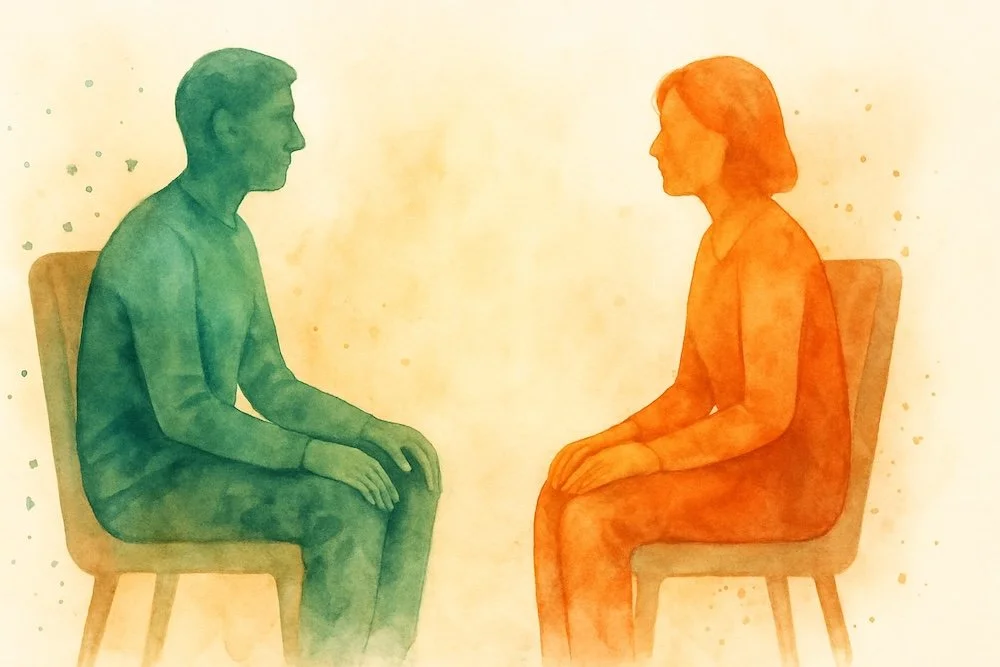Therapy and the longing for real connection
So many of our struggles come down to disconnection – from others, from ourselves. This post explores how therapy can offer a space to feel seen, rebuild trust and begin reconnecting with the parts of us we’ve had to hide.
Our yearning to feel connected
In my experience, so much of what we bring to therapy is really about disconnection.
Disconnection from others. From ourselves. From our needs, our bodies, our sense of aliveness. From the parts of us we’ve learned to hide. From the feelings we’ve never had permission to feel. From a sense of belonging.
Often, we don’t arrive at therapy naming it like that. We might say we feel stuck, anxious, numb, angry, overwhelmed, alone, burnt out – or simply that something’s not quite right. But underneath those very real experiences, there’s often a deeper thread: a yearning to feel connected again. To feel seen, understood and able to live life as our full selves. To experience the kind of relationships that nourish and sustain us.
The survival strategies that disconnect us
At some point in our lives, we’ve all had to adapt to circumstances that didn’t feel safe, stable or supportive in the ways we needed. We developed survival strategies to protect ourselves – by hiding, disassociating or deflecting our needs, by becoming self-reliant, staying small, staying quiet, staying pleasing, staying tough.
These ways of being typically begin in relationships – often in our childhoods – and they can follow us into new ones, long after they’re needed. Over time, these strategies can leave us feeling cut off: from our own inner experience, and from others.
We might find intimacy difficult. We might feel numb or shut down in certain circumstances. We might struggle to express ourselves with certain types of people. We might long for connection – while fearing it at the same time.
How therapy helps
Therapy offers a space to slowly rebuild real connection – starting with the relationship between therapist and client. When there’s enough safety, respect, consistency and care, we can begin to explore ourselves more openly. The patterns we bring into the room can be noticed together – with curiosity, not judgment.
In time, therapy can help us connect with the parts of ourselves we’ve had to hide or shut away. We can practice new ways of relating – being more honest (with ourselves and, in time, others), more boundaried, more expressive – and see what that’s like in a relationship where it’s safe to do so.
And gradually, those new experiences can ripple outwards. We can begin to show up differently in the world – more connected to ourselves, and more able to connect with others.
Closing thought
Sometimes the first step towards connection is simply being met – without pressure, without judgement. That’s what therapy offers. A steady, spacious place to explore what has perhaps been hidden or held back.
If any of this resonates with you and you’d like to find out more or see if we might work well together, feel free to get in touch and book a free 20-minute call.


